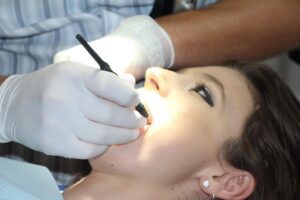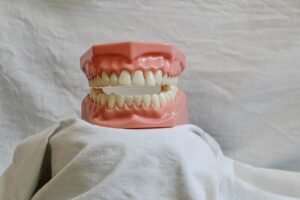The nose is one of the most prominent features of the face, and even small changes can significantly alter one’s appearance. Variations in the nose can markedly affect our overall facial features. Rhinoplasty is one of the most popular and sought-after cosmetic surgeries, so it’s no surprise that the demand for hyaluronic acid rhino modelling has increased.
What is Hyaluronic Acid (HA)?
Hyaluronic acid is a naturally occurring substance produced by our bodies, but its production decreases significantly over time. HA is primarily found in our joints, cartilage, and skin. This reduction can be observed in aging skin, which may show signs such as sagging, wrinkles, and dehydration. Replenishing HA helps combat these signs of aging, offering a natural-looking appearance with quick results.
What is Hyaluronic Acid Rhinomodelling?
Rhinomodelling is a non-invasive aesthetic treatment that involves injecting dermal fillers into the nose to correct imperfections and create a natural, aesthetic appearance by reshaping the nose. This treatment is an excellent option for people with nasal deformities and can be applied to different types of noses, such as aquiline noses or those with a hump. As an outpatient procedure, it allows the correction of nasal imperfections without surgery. If surgery isn’t an option, HA rhinomodelling is a quick, highly effective alternative with immediate results. It’s ideal for those who cannot afford surgical rhinoplasty or take time off work.
When to Choose Hyaluronic Acid Rhinomodelling?
If you’re considering modifying the appearance of your nose, we always recommend consulting with a maxillofacial surgeon before making any decisions. The type of treatment depends on whether you want to increase or decrease the size of your nose. Hyaluronic acid rhinomodelling is suitable for augmenting and reshaping the nose, while rhinoplasty is more appropriate for reducing its size. With this technique, you can:
- Improve the angle between the lip and nose
- Project the tip of the nose
- Add volume to the dorsum
- Correct deformities
- Elevate the nasal tip
- Eliminate the nasal curve
Hyaluronic acid rhinomodelling is ideal for minor nasal adjustments.
How is HA Rhinomodelling Performed?
The procedure is relatively simple. Specialists apply a topical anesthetic to the nose and surrounding area to numb it and prevent discomfort during the injections. Hyaluronic acid is then injected through small needles to correct nasal deformities. The filler is inserted deep beneath the skin, over the bone and cartilage, in areas where volume needs to be modified. The entire procedure can take between 20 and 45 minutes.
Tips and Care After Hyaluronic Acid Rhinomodelling
This treatment should always be performed under the supervision of a certified professional who will provide advice and guidance before and after the procedure. As this is an outpatient procedure, you can resume your normal routine afterward. However, certain precautions are recommended:
- Avoid unnecessary external pressure on the nose, such as wearing glasses (both sunglasses and reading glasses) for a couple of weeks, as there is a risk of the filler shifting.
- Avoid alcohol and strenuous exercise.
Benefits and Risks of Hyaluronic Acid Rhinomodelling
Benefits:
- Outpatient procedure: No need for hospitalization or extended recovery.
- Minimally invasive: A less invasive alternative to traditional rhinoplasty.
- Painless: Topical anesthesia minimizes discomfort.
- Safe and reversible: HA is generally well-tolerated, and results can be reversed if desired.
- Short procedure time: Typically completed in 20-45 minutes.
- Immediate results: Results are visible immediately after treatment.
- Temporary: Results last for about 16-18 months, allowing for periodic adjustments.
- Increased confidence: A more aesthetically pleasing nose can boost self-confidence.
- Cost-effective: Generally more affordable than traditional rhinoplasty.
- No scarring: Leaves no visible scars.
Risks and Disadvantages:
- Temporary results: The effects of HA rhinomodelling are temporary, requiring repeat treatments.
- Potential side effects: Common side effects include redness, swelling, and bruising at the injection site.
- Migration: In rare cases, the injected hyaluronic acid may migrate to nearby areas.
- Allergic reactions: Though rare, allergic reactions to HA are possible.
- Less dramatic changes: HA rhinomodelling may not achieve as significant or permanent results as rhinoplasty.
Frequently Asked Questions about Hyaluronic Acid Rhinomodelling
What is the post-operative care like after hyaluronic acid rhinomodelling?
As it’s a non-surgical procedure, aftercare is relatively simple. We will recommend a few precautions, such as avoiding sleeping face down for the first few days, refraining from wearing glasses, getting plenty of rest, avoiding alcohol and strenuous exercise, and staying away from heat.
What is the cost of hyaluronic acid rhinomodelling?
HA rhinomodelling is generally more affordable than traditional rhinoplasty, although rhinoplasty offers more significant and permanent changes. The cost of HA rhinomodelling depends on factors such as the areas of the nose to be corrected (e.g., tip, bridge) and the amount of HA to be injected. If you’re interested, contact us at clinica@birbe.org or +34 93 212 47 37 for a personalized consultation.
How should I sleep after hyaluronic acid rhinomodelling?
or the first 2-3 days after the procedure, it’s best to sleep on your back with your head elevated using a couple of pillows. Avoid sleeping face down to prevent the filler from shifting.
How long does hyaluronic acid rhinomodelling last?
The procedure typically takes 20-45 minutes, and results are immediately visible. The effects last for approximately 16-18 months.
What are the risks and disadvantages of hyaluronic acid rhinomodelling?
The nose or treated area may appear red for about two days post-treatment. Other possible side effects include swelling, bruising, or migration of the injected substance. Following the post-operative instructions is important. Unlike rhinoplasty, HA rhinomodelling requires repeat treatments after several months.



